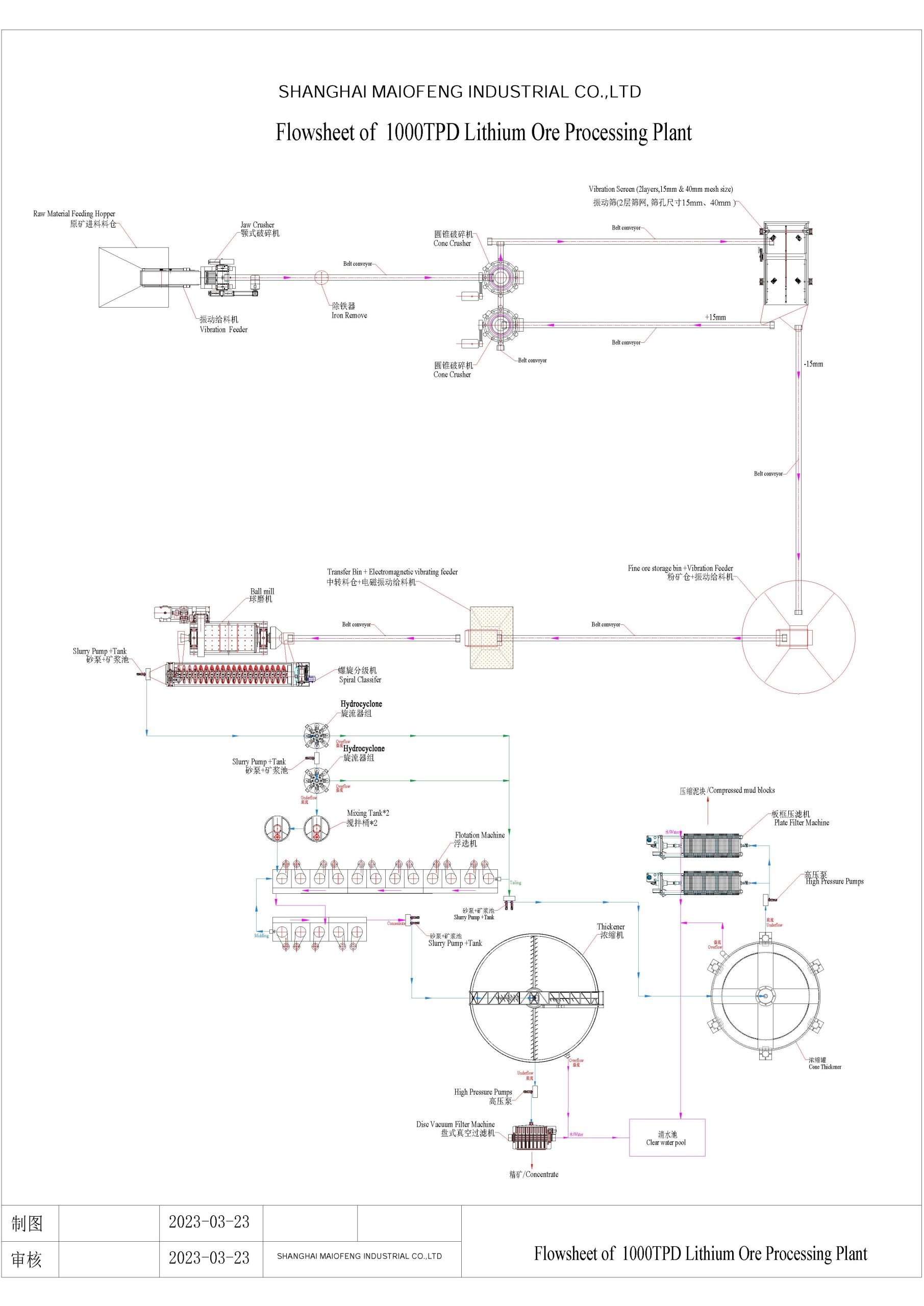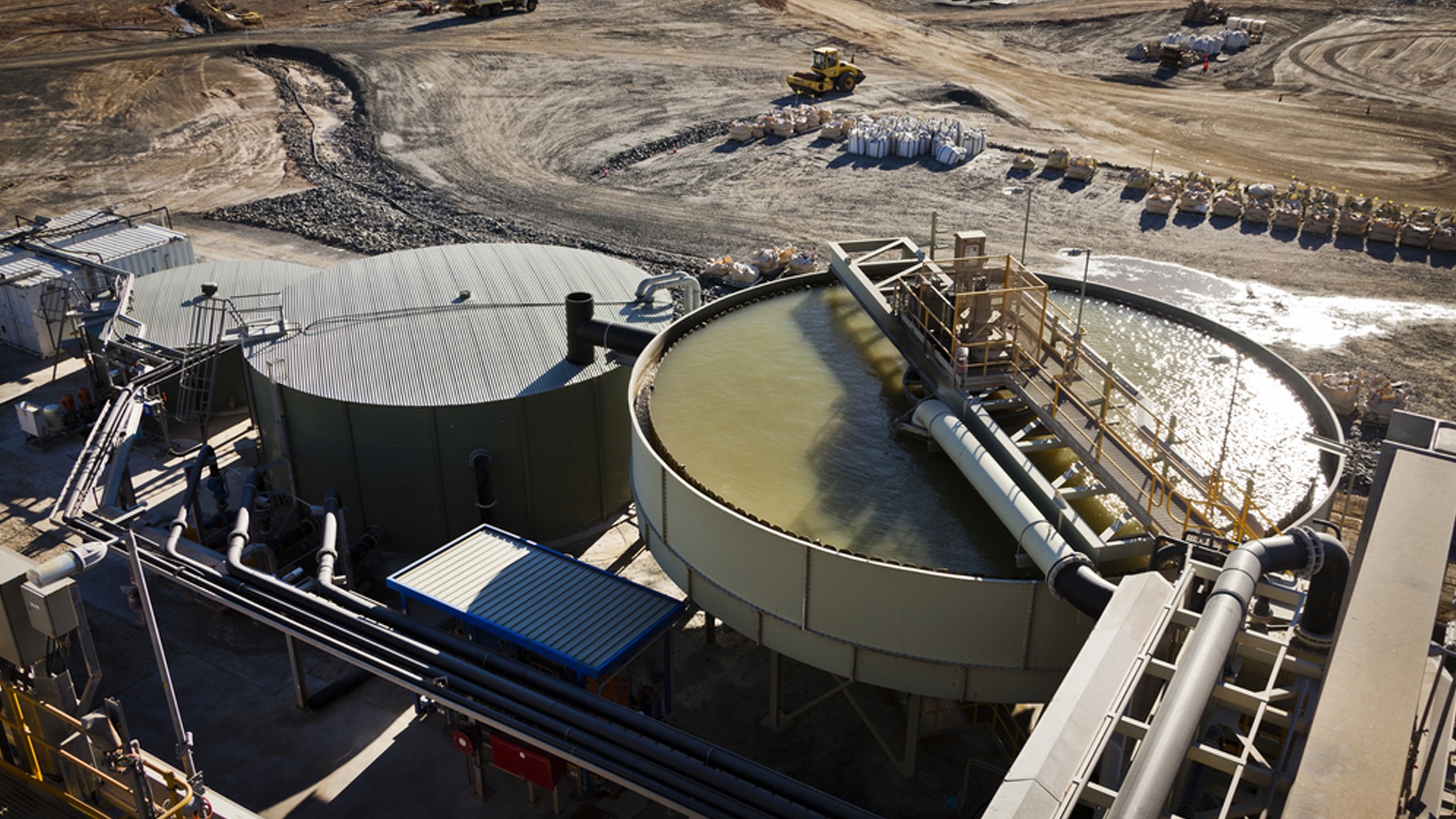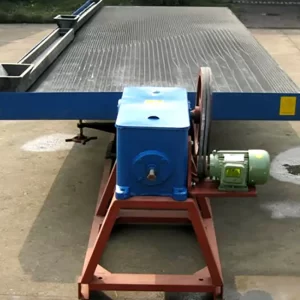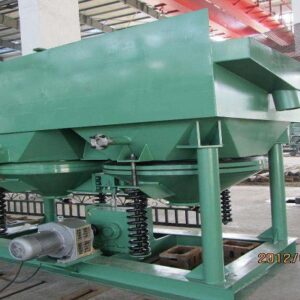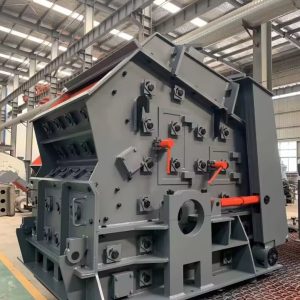Lithium Beneficiation Process
Different lithium ores have different properties, and the lithium content and mineral composition in minerals are different, so lithium ore beneficiation methods are also different.
The lithium beneficiation process is mainly used for three lithium-containing minerals processing: spodumene, lithium feldspar, lepidolite.
| Minerals | Lithium content/% | Density/(g⋅cm-³) | Hardness |
| Spodumene | 3.7 | 3.1~3.2 | 6~7 |
| Lepidolite | 1.39~3.6 | 2.8~3.3 | 2.5~4 |
| Lithium feldspar | 1.6~2.7 | 2.4 | 6~6.5 |
Lithium ore beneficiation primarily relies on the flotation process, often combined with gravity separation, magnetic separation, and other methods.
Gravity separation:
1. When the density difference between spodumene and gangue ore exceeds 0.2-0.5g/cm3, gravity separation is employed, particularly for coarse particle-sized spodumene. Equipment commonly used includes shaking tables and jigs.
2. When the density difference is less than 0.2~0.5g/cm3, the ore is mixed with a dense medium (a suspension made by mixing ferrosilicon powder and water) and subjected to separation in a dense medium cyclone.
Flotation separation: The flotation method can effectively sort the main lithium minerals, especially for fine particles disseminated in lithium ore where high recovery rates are achieved through a simple process.
Magnetic Separation: This auxiliary method removes iron impurities from concentrates. Weakly magnetic iron lepidolite and spodumene can be sorted using strong magnetic techniques to enhance the quality of spodumene products.
Flotation-Magnetic Separation Combined Beneficiation: When applying this combined process to lithium concentrate obtained via flotation that contains higher levels of iron impurities, low-iron spodumene can be obtained as a result.
Gravity-flotation-magnetic separation combined beneficiation: For lithium ores containing tantalum and niobium minerals, it is generally preferred to use a combination of gravity separation followed by flotation processing. After desliming treatment, the lithium ore undergoes gravity separation before entering the flotation stage. The resulting lithium concentrate from flotation is then sent to a magnetic separator for iron removal in order to improve its quality and ultimately obtain high-grade concentrate.
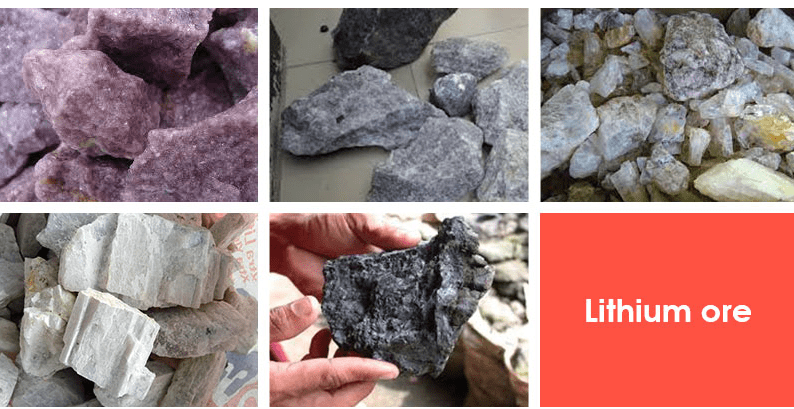
Lithium Processing Plant
1. Lepidolite Flotation Plant
1. Crushing & screening: The hopper and vibrating feeder automatically feed the 0-500mm material into the jaw crusher, which breaks large stones into small pieces. Next, the material enters the fine jaw crusher to be transformed into fine sand. The vibrating screen has a layer of screen mesh that is used to screen materials larger than 20mm and return them to the fine jaw crusher, while materials ranging from 0-20mm are directed to the storage bin.
2. Grinding: The storage bin and electromagnetic feeder automatically feed the material into the ball mill, where it is ground down to a size of 0-1mm as fine sand. Then, in combination with a spiral classifier, the ball mill forms a closed-circuit ring mill that ensures a final product particle size of 0-0.074mm.
3. Flotation: The overflow from the spiral classifier enters the slurry tank and is transported to the flotation machine by means of a sand pump. Chemicals are added to extract lepidolite concentrate.
4. Concentration: The concentrate from the flotation machine enters the slurry pool before being sent to a thickener via a sand pump for further processing. It then overflows into a clear water pool for water conservation and recycling purposes. Finally, using another sand pump, it is transferred to a disc vacuum filter in order to obtain dry lepidolite concentrate.
Note: In some cases where there were no major changes needed for clarity or coherence, I focused on improving conciseness by removing unnecessary repetition or redundant phrases
2. Spodumene Processing Plant
Crushing & screening: The crushing and screening stage of lithium ore can adopt a three-stage and one closed-circuit process or a two-stage and one closed-circuit process. It is important to consider the particle size of the raw ore and choose an appropriate lithium ore crushing process.
Grinding & Classifying: To ensure complete dissociation of lithium minerals from gangue minerals, a closed-circuit grinding and classifying process can be used, utilizing a ball mill + classifying machine. Depending on the properties of different lithium ores, some may require desliming after the grinding stage.
Beneficiation stage: Lithium ore often contains various associated minerals. Flotation is primarily employed for lithium beneficiation, sometimes in combination with gravity separation, magnetic separation, and other processes.
Concentrate dewatering: To obtain high-quality lithium concentrate, the concentrated product undergoes dewatering.
Step 1: Perform a mineral test
It is recommended to conduct a mineral test on lithium rock before proceeding with separation and production. This will help determine the most effective and scientifically sound beneficiation process and equipment, taking into consideration factors such as ore hardness, associated minerals, output, and investment budget. The aim is to avoid resource wastage.
Step 2: Crushing and grinding production line
The raw lithium ore undergoes a sequential crushing and grinding process to achieve a uniform fine particle size.
During the crushing stage, coarse (primary) crushing is carried out using a jaw crusher followed by fine crushing with a cone crusher.
The crushed material is then screened by a vibrating screen to obtain particles below 15 mm in size. Any materials that do not meet the required standards are sent back to the cone crusher for further crushing.
Subsequently, wet milling of the material takes place using a ball mill. Achieving an appropriate grinding fineness is crucial for optimal flotation results; therefore, it is generally necessary to grind the lithium ore to less than 0.15 mm in particle size.
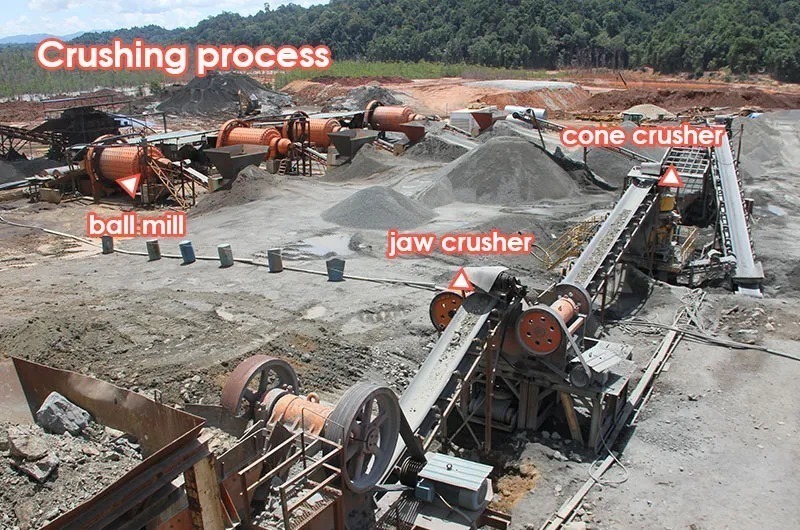
Step 3: Beneficiation Production Line
The battery industry, among others, requires high-grade lithium concentrate. Removing iron, magnesium, and other harmful minerals is crucial for these valuable markets.
To enhance the grade of lithium ore, a beneficiation process is necessary. Flotation separation is the primary method for producing lithium concentrate, with magnetic separation serving as a supplementary technique. Familiarize yourself with the beneficiation process for spodumene and lepidolite.
1. Flotation Separation
Currently, flotation separation stands as the main approach to separate lithium ore. All industrially valuable lithium ore can be enriched through flotation, particularly fine-grained disseminated lithium ore.
Flotation takes place in an alkaline environment because it yields favorable flotation outcomes while safeguarding the flotation machine and facilitating control.
There are two flotation processes for lithium ore: positive flotation and reverse flotation. Positive flotation is predominantly employed for lepidolite, whereas both positive and reverse flotation can be utilized for spodumene ore.
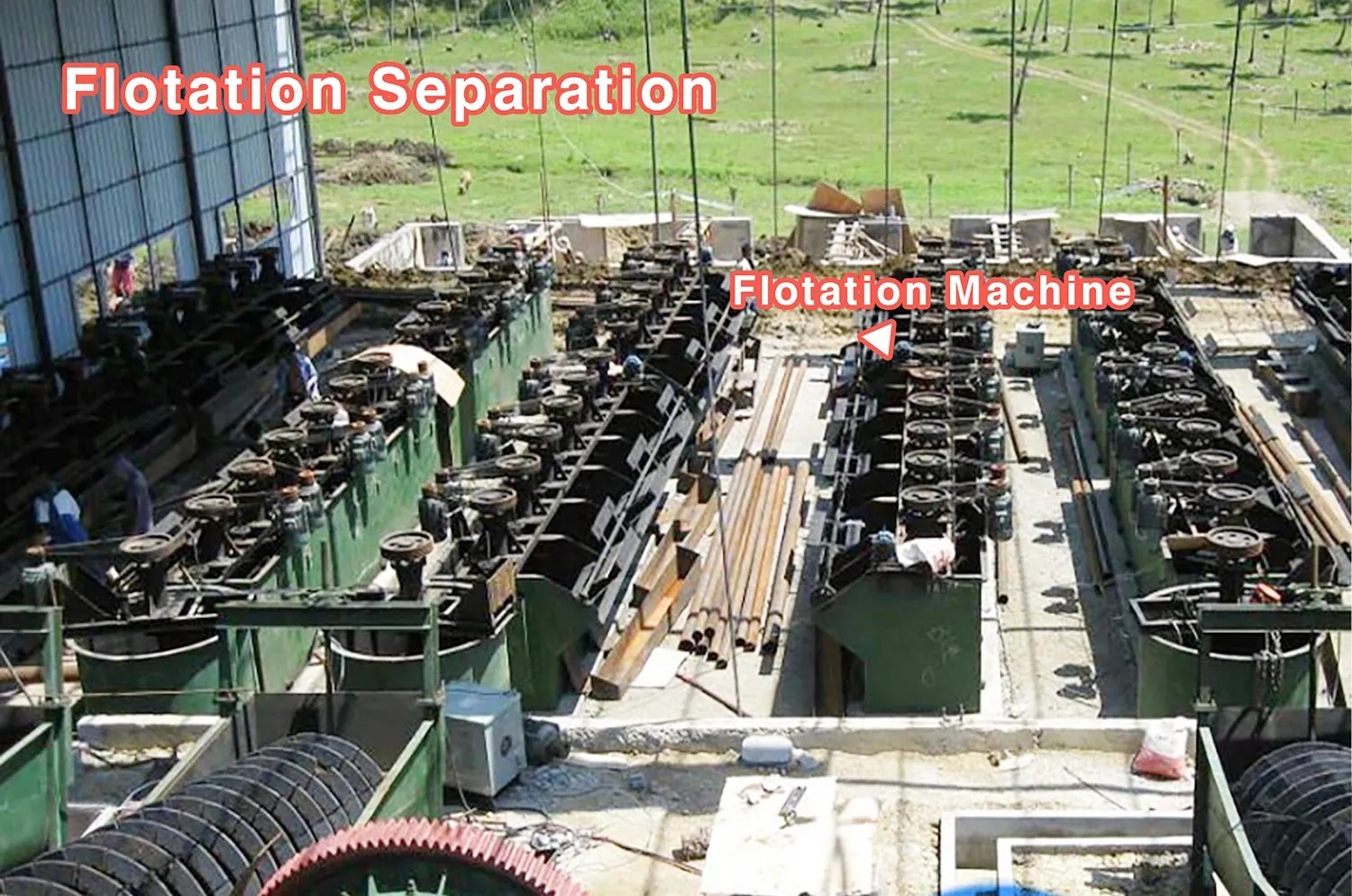
1.1 Method for positive flotation of lithium ore
After grinding the lithium ore, add a strong alkali (such as sodium hydroxide or sodium carbonate) for flotation.
In an alkaline medium, with high concentration, strong stirring, and multiple scrubbing, add oleic acid and its soaps as collectors to float the lithium concentrate while leaving gangue minerals in the tank. This process does not require inhibitors.
Note that when using spodumene for positive flotation, first add sodium hydroxide to the slurry for stirring and scrubbing to remove surface pollutants. After desliming and ore washing, it can be treated by any of the following methods:
1Float mica first, then float spodumene and finally float feldspar.
2Float spodumene first, then float mica and finally float feldspar.
3Perform mixed flotation of spodumene and mica and finally float feldspar to obtain spodumene concentrate.
1.2 Method for reverse flotation of lithium ore
Create an alkaline environment using lime and add regulators such as starch and dextrin to inhibit the floating of lithium ore.
At the same time, use amine cationic collector to float silicate gangue minerals to the surface of the slurry. The product in the flotation tank is lithium concentrate.
If there are iron minerals in the lithium ore, foaming agents (such as HF, resinate, terpineol oil) can be added to further aid in removing impurities like iron minerals. Finally obtain the lithium concentrate.
2. Magnetic Separation
Lithium ore is often found with complex components, and the lithium concentrate obtained through flotation may sometimes have a higher iron content. To enhance the grade of the lithium concentrate, magnetic separation is employed as an auxiliary method.
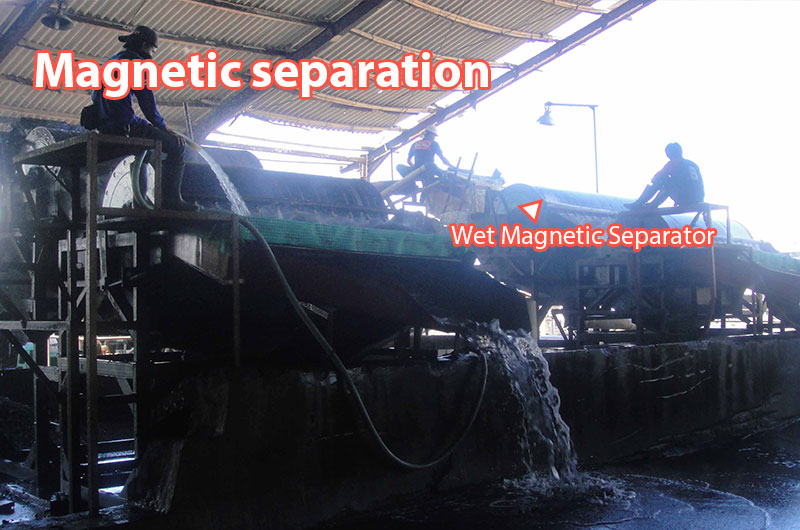
The commonly used magnetic separators include the vertical ring pulsating high gradient magnetic separator and the wet magnetic separator.
For instance, the spodumene concentrate produced through flotation separation in North Carolina, USA contains a high amount of iron. Consequently, it can only be sold as a chemical-grade concentrate. To meet the requirements of the ceramic industry, the plant employs magnetic separation to eliminate iron.
Furthermore, due to lepidolite’s weak magnetic properties, magnetic separation can serve as the primary method for producing concentrate.
Step 4: Drying production line
The lithium concentrate obtained after beneficiation typically has a high moisture content and therefore needs to undergo drying to reduce this moisture content.
Rotary Drum Dryers are highly popular in the drying market due to their wear resistance, energy efficiency, environmental friendliness, and high drying efficiency. These dryers can achieve temperatures up to 800°C and rapidly decrease material water content below 8% or even 0.5%. The particle size should be below 8 mm.

